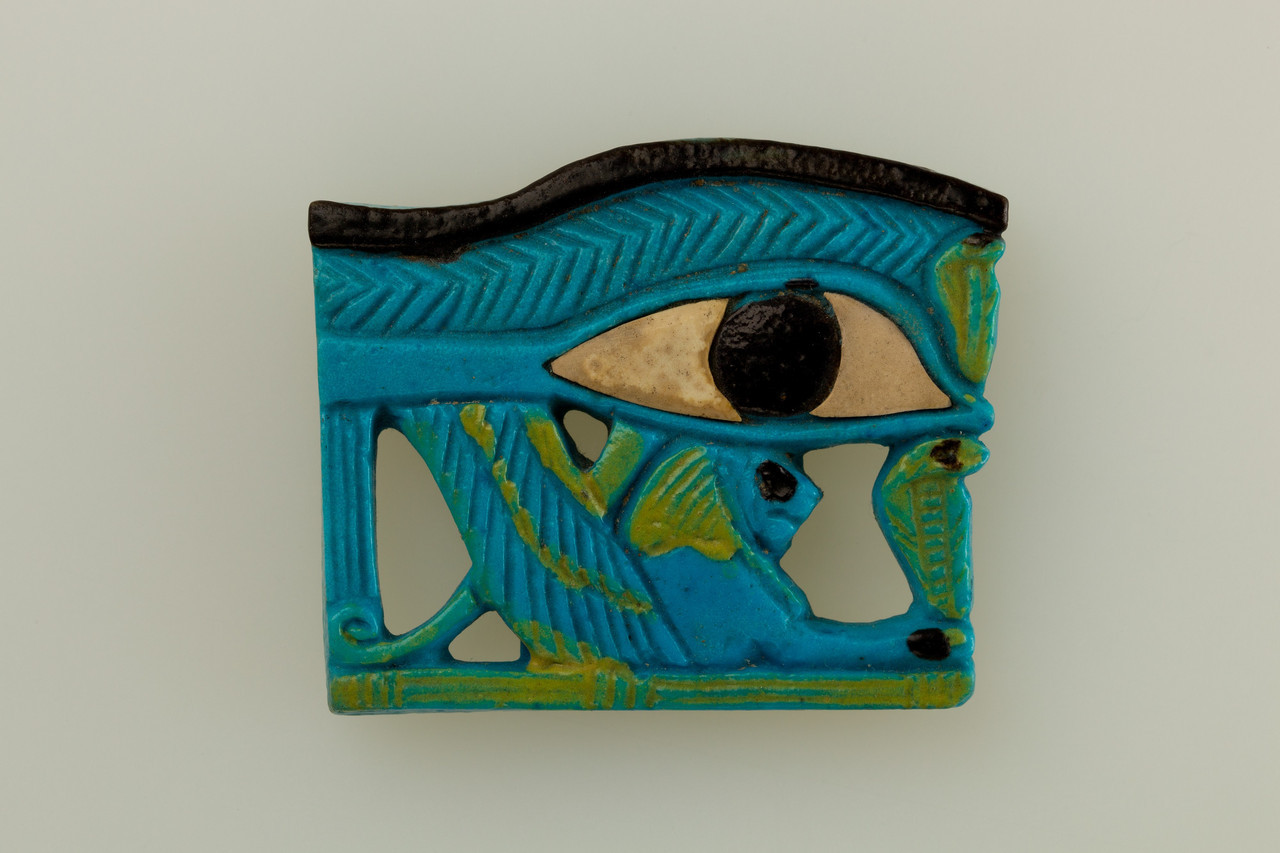Wedjat eye amulets were among the most popular amulets of ancient Egypt. The wedjat eye represents the healed eye of the god Horus and depicts a combination of a human and a falcon eye, because Horus was often associated with a falcon. The amulet embodies healing power as well as regeneration and protection in general. An amulet in this shape was thought to protect its wearer, to transfer the power of regeneration onto him or her, and to be a generally lucky sign. It was used by the living as well as for the dead.
In Egyptian mythology Horus’s eye was injured or stolen by the god Seth and then restored by Thoth. The ancient Egyptian name for the amulet, wedjat, means "the one that is whole or sound (again)," in other words, the eye that had been restored.
Another separate but related myth holds that Osiris, king of ancient Egypt died, drowned in the Nile by his brother Seth, who then gained the throne in Egypt. Driven by vengeance for the death of his father, Horus declared war on his uncle Seth. After many battles, Seth was defeated, and Horus returned to the reign of Egypt. During one of these epic battles, Horus lost an eye, and the legend says it broke into six pieces. Thoth, god of Egyptian mythology, reconstructed the eye by fragments and returned it to Horus. The eye of Horus then became a symbol of victory and of the superiority of good over evil.
This eye here is an intriguing combination of the regular wedjat eye with a wing, two uraei (rising cobras), and a lion. This combination alludes to various ancient Egyptian stories that involve the eye of the sun god Ra. It is made of faience, a glazed ceramic, and aragonite, a naturally occurring crystalline form of calcium carbonate.
This wedjat eye resides at the Metropolitan Museum of Art in New York, New York, and was purchased for the museum in 1926 by Edward S. Harkness, the philanthropist who injected a form of the Socratic Method of teaching to US high schools, colleges, and universities by his gift to Phillips Exeter Academy in 1930.
- Clinton Pittman
P.S. Read here about the famous Egypt and Berlin’s Icon: Bust of Queen Nefertiti.


 Unknown Artist
Unknown Artist